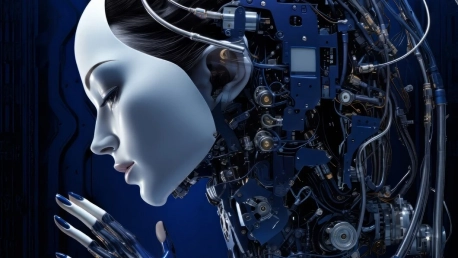The rapid evolution of artificial intelligence has led us into an era where the integration of multiple streams of data can simulate the human process of assimilating information through senses. Unlike traditional unimodal AI systems, which operate within the confines of a single data format—be it text, images, or sounds—multimodal AI endeavors to understand and interact with the world by synthesizing inputs from various data types. This development promises an AI that doesn’t just understand a picture or a sentence in isolation, but has the profound ability to grasp the context by considering all the different types of input it has been designed to process.
The Advent of Multimodal Learning
With the advancement in machine learning and natural language processing, AI systems are now able to learn from a mixture of datasets, which enables them to grasp the nuances of human language and sensory experiences. Multimodal AI stitches together data from text, visuals, audio, and sometimes even tactile signals to gain a comprehensive understanding of the content. This interdisciplinary approach to AI development mirrors the multifaceted way humans perceive and interact with their surroundings, thus allowing AI systems to make more informed and relevant decisions based on a more colorful and detailed tapestry of information.For instance, when examining a social media post, a multimodal AI can consider the text, emojis, images, and the tone of any accompanying audio to determine the sentiment behind the message. This allows for a level of insight that unimodal systems cannot achieve. By understanding the context in which language is used—along with the associated visual or auditory cues—multimodal AI systems can navigate through complex communicative scenarios, becoming more adept at understanding human intentions and reactions.
Bridging Human-AI Interaction
The aspiration behind incorporating multimodality into AI is to create technology that is more empathetic and intuitive in its response to human input. By bridging the gap in understanding between AI and humans, these systems are anticipated to pave the way for more natural and engaging interactions. Multimodal AI seeks to not just parse data, but to interpret it the way humans do: by considering all the aspects of a message and the context it’s presented in.In practical terms, this enables an AI system to assist users in ways that feel more personal and context-aware. For example, future virtual assistants might be able to understand a user’s mood through their speech and facial expressions, tailoring responses accordingly. In healthcare, multimodal AI could revolutionize diagnostics by combining patients’ verbal descriptions of symptoms with medical imagery and data derived from other sensory inputs, resulting in more accurate treatments.
Applications of Multimodal AI
Multimodal AI is making inroads in various sectors, reimagining how services and products are offered and consumed. In the realm of consumer electronics, smartphone features such as facial recognition, voice commands, and fingerprint sensors are all manifestations of multimodal technology. Simultaneously, the entertainment industry employs multimodal AI to create immersive virtual reality experiences where audio-visual elements are synced with haptic feedback.In the sphere of safety and security, multimodal systems can significantly enhance surveillance by fusing video feeds with audio and other sensors to detect anomalies and potential threats promptly. The growing field of autonomous vehicles also stands to benefit from multimodal AI, as such vehicles must process visual, auditory, and sensory data to safely navigate complex environments.
Shaping the Future through Multimodal AI
The advancement of artificial intelligence (AI) is propelling us toward an age of multitasking machines. Moving past the era of unimodal AI, which is confined to a single data type such as text or images, multimodal AI stands out by its ability to process and understand diverse data forms simultaneously. This marks a significant leap where AI can contextualize information much like humans—bringing together text, visual, and auditory data to form a holistic picture. By combining different data streams, multimodal AI opens a window into a more comprehensive understanding of the world, mirroring human cognition in a way that single-mode AI never could. This evolution in AI technology promises more intuitive interactions and a deeper grasp of complex contexts, delivering an experience that’s more aligned with the way humans perceive and interpret their surroundings.









